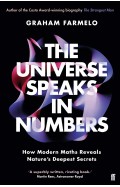Imperial Curiosity
By: F.S. Aijazuddin
-
Rs 3,400.00
- Rs 4,000.00
- 15%
You save Rs 600.00.
Due to constant currency fluctuation, prices are subject to change with or without notice.
This book surveys the work done by European artists who visited the Punjab, Sindh and Khyber-Pakhtunkhwa between 1845 and 1906, and the royal visits by three British Heirs apparent between 1875 and 1906, and unusually the Russian Czarevitch to Lahore in 1891.
The book includes two groups. The first, works by six artists: Charles Hardinge who fought in the first Anglo-Sikh war of 1845-46; Prince Waldemar of Prussia, who came to India to sight-see and instead fought as a combatant on the side of the British forces against the Sikhs at the three battles of Mudki, Ferozeshah and Sobraon; Dr Henry A. Oldfield came to the Punjab as part of the British force that occupied it after the unequal treaty of 1846; Colonel A.F.P Harcourt who served in Multan and Lahore in the late 1870s; the prolific war-correspondent / illustrator William Simpson; and the American artist, Edwin Lord Weeks.
The second group are four royal visitors: the British Prince Albert Edward of Wales who visited in 1876; his eldest son Prince Albert Victor who toured in 1890; and Prince George and Princess Mary of Wales in 1906. The fourth royal visitor was a Russian Romanov - the Czarevitch Nicholas Alexandrovitch (later the ill-fated Czar Nicholas II), who came to Lahore in January 1891.
This book surveys the work done by European artists who visited the Punjab, Sindh and Khyber-Pakhtunkhwa between 1845 and 1906, and the royal visits by three British Heirs apparent between 1875 and 1906, and unusually the Russian Czarevitch to Lahore in 1891.
The book includes two groups. The first, works by six artists: Charles Hardinge who fought in the first Anglo-Sikh war of 1845-46; Prince Waldemar of Prussia, who came to India to sight-see and instead fought as a combatant on the side of the British forces against the Sikhs at the three battles of Mudki, Ferozeshah and Sobraon; Dr Henry A. Oldfield came to the Punjab as part of the British force that occupied it after the unequal treaty of 1846; Colonel A.F.P Harcourt who served in Multan and Lahore in the late 1870s; the prolific war-correspondent / illustrator William Simpson; and the American artist, Edwin Lord Weeks.
The second group are four royal visitors: the British Prince Albert Edward of Wales who visited in 1876; his eldest son Prince Albert Victor who toured in 1890; and Prince George and Princess Mary of Wales in 1906. The fourth royal visitor was a Russian Romanov - the Czarevitch Nicholas Alexandrovitch (later the ill-fated Czar Nicholas II), who came to Lahore in January 1891.
Forgotten Images : Postcards of Pre-Pakistan, 1890 - 1947
By: F.S. Aijazuddin
Rs 10,800.00 Rs 12,000.00 Ex Tax :Rs 10,800.00
Zubin Mehta: A Musical Journey (An Authorized Biography)
By: VOID - Bakhtiar K. Dadabhoy
Rs 892.50 Rs 1,050.00 Ex Tax :Rs 892.50
Populism - Before and After the Pandemic
By: Michael Burleigh
Rs 3,055.75 Rs 3,595.00 Ex Tax :Rs 3,055.75
The Universe Speaks in Numbers - How Modern Maths Reveals Nature's Deepest Secrets
By: Graham Farmelo
Rs 2,375.75 Rs 2,795.00 Ex Tax :Rs 2,375.75
The Origins of Political Order From Prehuman Times to the French RevolutioN
By: Francis Fukuyama
Rs 4,045.50 Rs 4,495.00 Ex Tax :Rs 4,045.50
Manning Up: How the Rise of Women Has Turned Men into Boys
By: Kay Hymowitz
Rs 845.75 Rs 995.00 Ex Tax :Rs 845.75
The Obama Syndrome: Surrender At Home War Abroad
By: Tariq Ali
Rs 1,100.75 Rs 1,295.00 Ex Tax :Rs 1,100.75
The Quest For Meaning: Developing A Philosophy Of Pluralism
By: Tariq Ramadan
Rs 1,185.75 Rs 1,395.00 Ex Tax :Rs 1,185.75
The Pakistan US Conundrum Jihadists The Military And The People The Struggle For Control
By: Yunas Samad
Rs 1,185.75 Rs 1,395.00 Ex Tax :Rs 1,185.75
An Enemy We Created: The Myth Of The Taliban Al Qaeda Merger In Afghanistan 19702010
By: Alex Strick van Linschoten
Rs 4,197.50 Rs 8,395.00 Ex Tax :Rs 4,197.50
WikiLeaks: Inside Julian Assanges War on Secrecy
By: David Leigh & Luke Harding
Rs 637.50 Rs 850.00 Ex Tax :Rs 637.50
Populism - Before and After the Pandemic
By: Michael Burleigh
Rs 3,055.75 Rs 3,595.00 Ex Tax :Rs 3,055.75
The Universe Speaks in Numbers - How Modern Maths Reveals Nature's Deepest Secrets
By: Graham Farmelo
Rs 2,375.75 Rs 2,795.00 Ex Tax :Rs 2,375.75
Jadeed Turk Shayeri Se Intikhab (Urdu Tarjama)
By: Dr. Asuman Belen Ozcan
Rs 765.00 Rs 900.00 Ex Tax :Rs 765.00
Zubin Mehta: A Musical Journey (An Authorized Biography)
By: VOID - Bakhtiar K. Dadabhoy
Rs 892.50 Rs 1,050.00 Ex Tax :Rs 892.50
Forgotten Images : Postcards of Pre-Pakistan, 1890 - 1947
By: F.S. Aijazuddin
Rs 10,800.00 Rs 12,000.00 Ex Tax :Rs 10,800.00
Populism - Before and After the Pandemic
By: Michael Burleigh
Rs 3,055.75 Rs 3,595.00 Ex Tax :Rs 3,055.75
The Universe Speaks in Numbers - How Modern Maths Reveals Nature's Deepest Secrets
By: Graham Farmelo
Rs 2,375.75 Rs 2,795.00 Ex Tax :Rs 2,375.75


















-120x187.jpg?q6)








-120x187.jpg?q6)



-120x187.jpg?q6)





-Paperback-120x187.jpg?q6)




